Banned Books Week – Muted Locally?
This corner has made banned books a focus, especially over the last year or so. As such, the recognition of Banned Books Week here should be of no surprise to any regular visitor. This year’s observance was noteworthy for the increase in media attention toward the various attempts around the country to restrict access to books in both school and public libraries, according to the annual reporting of the American Library Association.
Seeing how the Carnegie Library of Pittsburgh was putting forth activities related to this year’s observance, and seeing no visible references to the week at our local library, I inquired of the Allegheny County Library Association (ACLA) if they knew of any observances at libraries outside the city. Incidentally, Banned Books Week was founded here in Pittsburgh – good to know.
ACLA CEO Amy Anderson stated that the group’s individual members may have displays or other small observances, but there was nothing on a coordinated basis being done by the organization as a whole. She did mention a “Blind Date with a Book” event at the Avalon Public Library – I confirmed with this library that their event is ongoing, possibly through the end of the month or “until all the books are checked out“.
I recently walked through the Moon Township Public Library, which has had its share of administrative upheaval this year. I found no display or other indications that the library was observing or highlighting the week in any way.
To be honest, I haven’t seen much of a commemoration by the Sewickley Public Library for several years. Given this seeming low-key response by many suburban libraries, I thought it would present a good opportunity to touch base with SPL’s new Executive Director, Ruth Neely.
Along with more programming around Banned Books Week and the reported trends toward challenging public library content along with that of school libraries, I was interested in getting Ms. Neely’s perspective on this, considering her background as Director of Libraries at Sewickley Academy. As reported by the Sewickley Herald on September 13, Ms. Neely spoke of her calling as a provider of information –
What truly drew me to libraries was having the belief of having quality information available to everyone, and for free…This equitable sharing of resources to create a better informed population or to improve the quality of life for a community, that’s what really spoke to me.
Ms. Neely declined my request for an interview in late September, citing a “need to focus on committing my time to the projects in front of me for now” – this includes the library’s continued renovation and associated operational challenges, along with the culmination of their 150th Anniversary celebration.
When I do get to speak with her, I would like to ask about her transition to SPL from SA, and how that move speaks to her beliefs as expressed above. As she presided over the SA libraries during the school’s administrative upheaval in 2021 and 2022, I’m interested in her perspective of those events.
I would also be interested in knowing if there was any pressure on those libraries from the same activist parents that demanded and orchestrated that upheaval. If such pressure existed, could it have risen to a level that may have caused Ms. Neely to seek employment elsewhere?
As of this writing, Ms. Neely is still listed as the Chair of Department for the Academy’s libraries, per a screen capture from their website on October 1. Perhaps they miss her…
It looks as if she’s happy to be remaining in the area. Hoping that SPL and its patrons will benefit from her experience and enthusiasm.
Blacksmith’s House Back on the Market – Preservation Debate Ensues
When I wrote about the Blacksmith’s House last year, I framed much of the article around the connections that have shaped the history and ownership of several properties in Edgeworth that were purchased by Sewickley Academy for the stated purpose of developing athletic facilities.
It wasn’t until I read the Herald story about Ruth Neely that another connection became painfully obvious, and somewhat timely. Quoting the story –
Neely has a family connection in Sewickley’s history. Her four-times great grandfather, William Neely Sr., opened the first blacksmith shop in the borough along Beaver Road in the mid-1800s.
According to their op-ed in the May 6, 2022 Herald, the Sewickley Valley Historical Society captioned an old photo by stating that the Blacksmith’s House “was built for William Neely, blacksmith for the Shields family, who came to the area in 1839“.
This is something else that I’d like to ask Ms. Neely about, especially given the potentially existential threat to the house that its purchase by her then-employer may have initially represented.
As we now know, the Academy’s initial plans for the property may have been derailed by the existence of a covenant that restricts use of the Blacksmith’s House property to that of a single-family dwelling. This and other community concerns related to the preservation of both the Blacksmith’s and Miller’s houses, and the protection of the nearby environment, impacted the Academy’s initial plans to improve the facilities at Nichols Field.
Instead of the installation of a large synthetic turf field along with lights and improved bleacher seating (among other amenities), the Academy revised their submission in March of this year to a more modest proposal. In April, Edgeworth Council approved the project. The minutes of that meeting (under New Business) detailed the scope of the revised project, the challenges that necessitated the revisions, and the variances granted to allow for its approval.
According to those minutes, SA Facilities Director Jim Miller cited requirements related to stream protection as a key factor in the project’s scope being reduced –
Mr. Miller explained that turf installation is considered earth disturbance, and in order to comply with all regulations related to NPDES (National Pollutant Discharge Elimination System) permitting, installing turf on all fields results in requirements that the Academy is unable to meet.
Mr. Miller added that earth disturbances under one acre do not require an NPDES permit, which resulted in the turf installation being limited to the baseball infield. This compromise in scope should be good news for those concerned with the protection of the Little Sewickley Creek Watershed.
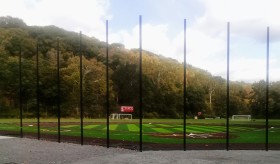
Improvements at Nichols Field include a newly paved parking lot, and a reconstructed baseball field that includes synthetic turf. Click to enlarge.
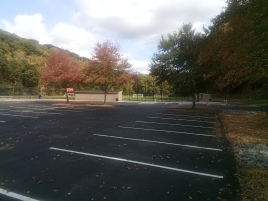
Paving with wedge curbs and the installation of a rain garden will allow for effective stormwater drainage. Click to enlarge.
In a Herald report from March 9 of this year, SA Head of School Ashley Birtwell stated they had no plans to demolish either the Blacksmith’s House or the Miller’s House, adding that “we’re still exploring options there“.
Seven months later, those plans have taken the shape of making moves to jettison the Blacksmith’s House, and repurpose the Miller’s House for revenue generation. At the beginning of this month, the Academy placed both houses on the sale and rental real estate markets respectively.
Leslie and I toured the Blacksmith’s House during an open house by the listing agent on October 3. It has been painstakingly maintained, but is in need of upgrades on several fronts. It feels ideal for a buyer intent on providing modern upgrades, while preserving some of the interior character and exterior charm of the entire lot, including the detached garage / workshop.
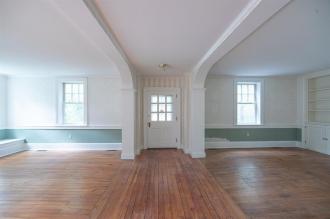
Miller’s House interior, with original flooring. Click to enlarge – Berkshire Hathaway Home Services
Ironically, an example of upgrades that are complementary to a historic site can be seen in the Miller’s House rental listing. The interior has a newer kitchen, paint, and what appear to be electrical and lighting upgrades, while maintaining the original hardwood flooring in many places. It appears to be ideally suited for an executive rental, which the advertised rent (whew!) would also seem to indicate.
Citizens concerned with the long-term preservation of historic properties in Edgeworth may see this as a singular success, with the larger goal of a preservation ordinance yet to be achieved, and additional work to be done.

The covenant protecting the Blacksmith’s House property prevents its use for anything other than a single family dwelling, with associated outbuildings. In the absence of a preservation ordinance, this would not prevent a new homeowner from demolishing the Blacksmith’s House in favor of new construction that fits the stated parameters.
I reached out to Mike Cevarr, who was instrumental in forming the ad hoc group Preserve Edgeworth, about any plans to continue efforts in this direction. He stated that he personally did not have the time to pursue a preservation ordinance effort, but is encouraging those with interest to take up the cause.
In conversation with others, it sounds like the will is there to muster the involvement of Edgeworth residents in pressing their elected officials to develop and enact a preservation ordinance. A display of citizen consensus on the matter has been a condition that those same officials have required over the nearly 30 years that the issue has been discussed in the media and elsewhere.
Best wishes to them.
Sewickley Maternity Unit Closure has Existential Overtones
The Herald report of the recent closure of the Labor and Delivery Unit at Heritage Valley Sewickley was unexpected and more shocking to me than I expected it would be. My brother and I were born there, as were Leslie, all of her siblings, one daughter and our granddaughter – a total of 15 people whose lives began at Sewickley Hospital – it’s almost as if a cornerstone of the community has been unceremoniously removed.
Heritage Valley Health System (HVHS) CEO Norm Mitry made comments to the Herald that certainly sounded like he was feeling it too – “This has been one of the most painful decisions we’ve ever had to make” – but the Herald reporting further illustrated the difficulties that resulted in this move.
Seems that the physicians doing most of this delivery work have largely flown the coop, and whatever physicians that HVHS tried to recruit to maintain these services were not keeping it financially viable. The situation feels similar to when a long-serving group of primary care / family practice physicians left for Allegheny Health Network in 2016.
Mothers-to-be can still obtain prenatal care at Sewickley, but their only option for delivery within the HVHS system is at the Beaver hospital. This closure leaves few maternity care options within northwest Allegheny County aside from the relatively new AHN Wexford.
Aside from this specific closure, the downsizing and/or consolidation of local hospital services into facilities with a more regional scope is a trend that is increasing in frequency across the region. According to a June report from Kris Mamula at the Pittsburgh Post-Gazette, this trend is favored over outright closure of facilities for more than just effective coordination of services –
One advantage: Little public backlash comes with downsizing — unlike what happened when UPMC announced the closing of Braddock Hospital in 2010, which spurred a messy community standoff. Closing a hospital dialysis unit or shifting joint replacement surgeries to a regional hospital from a smaller, community hospital can pare costs without drawing a public outcry.
A sampling of Mr. Mamula’s recent reporting shows several stories related to Heritage Valley’s difficulties with both “several years of sizable operating losses” and the shifting of ICU services from HVHS Kennedy to the Sewickley Hospital, making the Kennedy location “a campus of Heritage Valley Sewickley Hospital, (which) will continue to operate an emergency room, an array of diagnostic services and outpatient rehabilitation and a 45-bed behavioral health unit”.
Sources close to local health care operations indicated that many of these difficulties may be tied to the HVHS acquisition of the former Ohio Valley General Hospital in 2019, and the related additional expense. With patients requiring intensive care now being shunted from Kennedy to Sewickley, it also appears that patients in need of behavioral health services are receiving those mainly at the Kennedy location.
It should also be noted that HVHS, one of only two independent health care systems remaining in Allegheny County, is also the only health system that owns a local EMS agency, having purchased NorthWest EMS not long after the Ohio Valley acquisition. Considering the difficulties that EMS agencies without such backing are experiencing, one wonders how much of a financial burden a large EMS provider may be placing on a parent health care system already experiencing financial challenges.
KDKA-TV investigative reporter Andy Sheehan did a three-part series last week on the fiscal and staffing challenges affecting EMS statewide. He also highlighted a new advocacy group, made up of some of the most experienced names in EMS in PA, that is starting a push to educate providers and the public (and lobby legislators) about what is needed.
I’ve had occasion in recent months to visit Heritage Valley facilities to be with family members receiving care. The providers there remain dedicated to their work, and the facilities themselves are clean and appear well-run in spite of the small signs of a health care system that is contracting to focus resources on what they feel they can sustain.
I also found some painful irony in this move, given the continued presence in our area of organizations that have made, and continue to make, a great difference in the lives of our area’s children – groups such as the Child Health Association, Laughlin Children’s Center, and the Watson Institute.
For me, this is just an additional example of how the Sewickley Valley is codependent on the communities that surround it – the illusion of our area’s exclusivity is increasingly untenable as big box stores, health care facilities, and other examples of development flourish in surrounding areas where available land is cheaper and more abundant.
The rush hour traffic that backs up around and on what is a lifeline of our local area – the Sewickley Bridge – is a continual reminder of how we must keep up with others around us in order to remain relevant to the greater whole of our citizenry.
Nearby towns such as Ambridge and Coraopolis are reinvigorating local community spirit in part through small business investment, spurred by reasonable retail space and housing costs in comparison to that offered here – and it’s no mistake that these communities have an increasingly multicultural flavor to them. It’s almost as if these areas are hearkening back to their “melting pot” origins – or not.
Who shall thrive in this climate?
Rize Sports Arises in Leetsdale Industrial Park – Cui Bono?
In keeping with a theme of what types of investment and energy translate to an improved sense of community, we come to the opening of the new Rize Sports basketball facility in the Leetsdale Industrial Park. With 55,000 square feet of dual purpose basketball and pickleball courts, the new facility will reportedly feature –
…three regulation basketball courts with seating for approximately 80 spectators and one championship regulation basketball court with seating for around 250 spectators. It will also include a state-of-the-art practice basketball court. Other amenities include two multi-purpose team rooms, a café area, grab-and-go concessions, a lounge area, and a training room. The two multi-purpose rooms can be used for small corporate meetings and banquets.
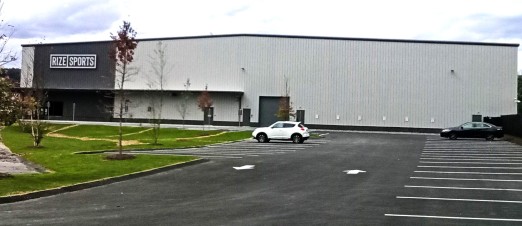
Rize Sports, Leetsdale Industrial Park.
If the name sounds somewhat familiar, the facility shares the same ownership as the Ramp N Rize boutique fitness center in Sewickley, and was funded by Edgeworth billionaire Thomas Tull and his wife, Alba. This new venture is managed by Sports Facilities Companies, a Florida-based management firm specializing in these kinds of operations.
The new facility benefited from a focused PR blitz that began in August and continued into this month, culminating in a grand opening celebration on September 27 that was emceed by Steelers veteran Charlie Batch. Among those in attendance were numerous luminaries from the basketball world, including Julius “Dr. J” Erving, WNBA star Diana Taurasi, and Moon Township native and University of Kentucky coach John Calipari.
The Post-Gazette reporter covering the festivities was gushing over the new facility, as was Coach Calipari –
“This isn’t for-profit, this is to help that community…I’m telling you, it’s going to benefit them and kids will say, ‘I had a place to play.’ You don’t know the impact it’s going to have until five or 10 years from now, but I can tell you they did the right stuff in that building.”
More interesting to me than the lineup of celebrities that attended the opening is who was not there – in perusing the media coverage, I did not see any representatives of Leetsdale Borough or the Quaker Valley School District in attendance.
Contacted this week, QVSD spokesperson Michelle Dietz stated that she was “not aware of any District officials who were invited or attended in an official capacity“.
Information received from Leetsdale officials indicated that while invited to the event they were advised not to attend, due to issues related to the occupancy permit for the facility that have yet to be resolved.
There is reportedly a list of conditions that has been provided to Chapman Properties, who manages the industrial park, related to unresolved corrective measures at the site. I have requested this information from the borough via the Right to Know Law.
Some of these issues may be contributing to some hard feelings from some residents of Washington Street whose properties abut the Rize building and adjacent Monroe Way. Opinions expressed on social media and elsewhere cite problems such as increased building-related noise, excessive use of exterior lighting, and a diminished residential esthetic as a result of the new construction.
Issues about its legal occupancy notwithstanding, Rize Sports management is wasting no time attempting to get the facility working, advertising a 2-day tournament for middle school-age boys near the end of the month, with an added incentive of no fee for team entry.
Recreational facilities in the commercial areas of Leetsdale across the Maruca Overpass have experienced a mixed bag of success. A trampoline park that opened in the industrial park in 2013 closed after a few years and relocated to Canonsburg. By contrast, the Three Rivers Karting facility in the Buncher Commerce Park has expanded its offerings since its inception, and appears on the surface to be doing well.
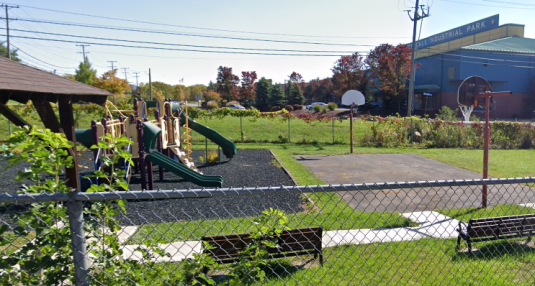
Lynn Kohlmeyer Memorial Park in Leetsdale, at the south end of Washington Street and Monroe Way, literally in the shadow of the new Rize Sports facility and the industrial park. – Google Maps
I have questions about exactly what types of participation the Rize facility will invite and nurture – will this be an asset that the entire community can integrate into, or will it specialize primarily in providing an elite competition and training experience to those with a particular skill set, competitive advantages, and/or ample financial resources?
As much as the community at large may reap some form of benefit from the Rize facility and the continued investment activities of Mr. Tull, I think it’s equally important to take stock of those public facilities that belong to all of us.
In Leetsdale, borough council has taken steps to assess the community’s interest level and priorities when planning wholesale improvements to the borough’s parks. Kohlmeyer Park (pictured above) is a well-kept and updated small park situated to serve residents of the Washington Street area, but can also be a welcoming space for anyone.
Changes are also in the works for the more popular and centrally located Edward Henle Park. While not privy to any specifics, Council did authorize the replacement of the basketball equipment in the park, which will likely occur closer to next Spring. This is something to look forward to.
We are three weeks away from Election Day. The lead-up to this highly consequential vote on the local level has already become more than just interesting – I’ll have more to report about in a couple of weeks.
In the meantime, enjoy the Fall weather.



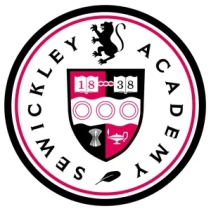
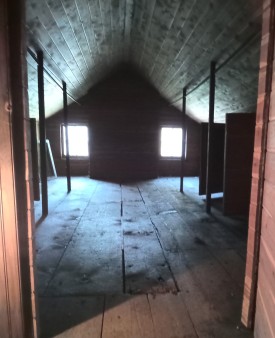


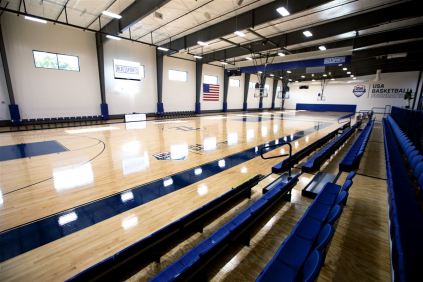
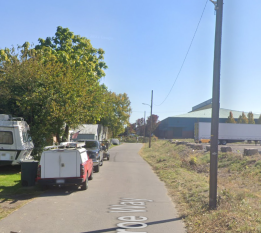
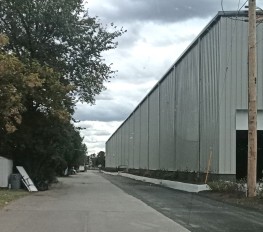

































Pingback: Winter Digest – Reorganization, Resolve, Revelation…and Rachmaninoff | John Linko